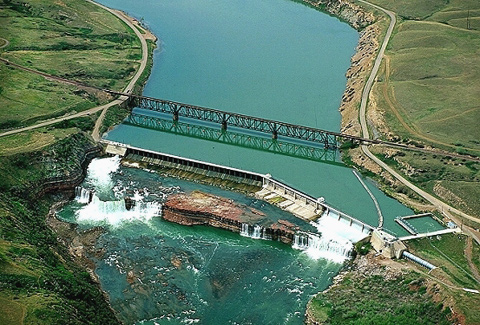After briefly contemplating the Crooked Falls on 14 June 1805, Lewis followed the sound of “a tremendious roaring” to “one of the most beautifull objects in nature,” a fifty-foot-high cascade “with an edge as regular and as straight as if formed by art.”
Its stunning beauty made him wonder to himself which was the more awesome, the huge waterfall he had seen the day before (the Great Falls), or this. “I now thought,” Lewis wrote rapturously in his journal, “that if a skillfull painter had been asked to make a beautifull cascade that he would most probably have presented the precise image of this one; nor could I for some time determine on which of those two great cataracts to bestoe the palm, on this or that which I had discovered yesterday; at length I determined between these two great rivals for glory that this was pleasingly beautifull, while the other was sublimely grand.”
Today, Lewis’s “pleasingly beautifull” cascade goes by the name Rainbow Falls. The falls were shortened on the north end when Rainbow Dam was built in 1910. Half a mile farther upstream Lewis discovered a “cascade of about 14 feet possessing a perpendicular pitch of about 6 feet.” Later named Colter Falls, it was submerged beneath the reservoir behind Rainbow Dam.
See also Rainbow Falls.
From Discovering Lewis & Clark from the Air
Photography by Jim Wark
Text by Joseph Mussulman
Reproduced by permission of Mountain Press

